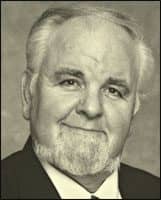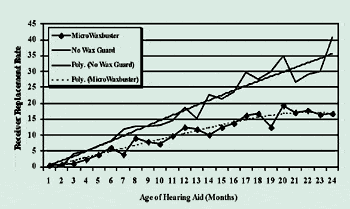Part 1: Basic questions often yield the best answers

|
| Jay B. McSpaden, PhD, CCC-A, BC-HIS, is an audiologist who retired from private practice and currently works part-time as a hearing instrument specialist in Jefferson, Ore. |
On the whole, the hearing industry and the respective hearing care professions have an almost insane magnetic attraction to new ideas and groundbreaking technology, while rarely being concerned with or bothered by old thoughts and staid habits. Too rare are the times we actually ask ourselves: Why am I doing this test? Why am I doing it this way for this patient? Why am I doing it in this order within my armamentarium? And, too often, the most frequent and truthful answer is “Because that’s the way I’ve always done it” or “That’s the way it was taught to me.” I hope you’ll agree that these are not adequate reasons, and they do not rise to a level of best practices.
If these types of questions don’t occur to you on a regular (if not daily) basis, then you’re simply “flying by memory” and setting yourself up to be “looking for a place to crash.” When we find ourselves in clinical ruts, we doom ourselves to repeat the practices of the past. So, when we encounter a new problem or unexpected clinical finding—one that could represent a treasure hunt that stimulates your professional sense of curiosity—it instead becomes a frustrating and confounding Rubik’s cube.
The problem of old thoughts and habits also applies to the business side of our profession. People grouse about their practices and the recent hard times “everyone” is experiencing; yet, as we emerge from the worst economic period since the Great Depression, more hearing aids are being sold in the United States than ever before—2.6 million last year or 9% more than in 2008. There are thousands of extremely bright and multi-talented clinician/entrepreneurs in our field, but there is also an infectious ennui that sometimes invades our ranks, forcing us to follow habit rather than thought.
Who’s Your Most Important Staff Member?
The most important and usually least trained (and therefore lowest paid) member of most professional staffs is the person who answers the telephone. This can be a humbling and irritating truth for a practice owner to come to grips with, given that one may expend several thousands of dollars on special equipment, professional training, office furniture, and ambience, and then even more in marketing just to get the phone to ring in the first place. Yet, despite all of these large and usually necessary investments that should ensure a thriving practice, the one thing you will count on the most is how well your receptionist’s mother taught them to answer the telephone—and how well they remember basic rules of politeness.
You need to train and constantly retrain (ie, update) your receptionist. About half of all the calls they will receive are not sales opportunity calls, but rather cancellations, rescheduling requests, and other basic patient questions. The answers and the demeanor of your receptionist during these calls will directly impact your patient retention abilities—on average, representing about 50% to 70% of an established practice’s revenues. The other half of the phone calls are new or potential customers—precious and absolutely vital for the ongoing growth of your practice.
If your receptionist is pleasant and knowledgeable, and establishes a good rapport with patients and their partners; if they get complete and full information from callers; if they consistently relay important information to you and your staff members; if they convey an honest sense of caring for those visiting the office; if they appear to enjoy working with the people who patronize your business; and if they feel appreciated and “own into” their vital role in helping people overcome hearing loss, then your investments in all of the other aforementioned components of the practice will yield fruit. If not, you need to ask yourself some questions!
Emphasizing spouse/partner visits. One of the basic things that a receptionist needs to understand is that, when patients come in alone, there is only about a 25% chance they will purchase a hearing aid during that appointment; in most cases, they’ll need to go home and discuss the purchase with their partner. However, if the spouse or partner comes with the patient, an immediate decision can be made—and the explanation process is made infinitely easier for the patient when their partner sees and understands the magnitude of communication improvement made by hearing aids. In these cases, the likelihood of a purchase increases to around 76% to 80%.
After all, the patient needs to be able to understand their partner much more than they need to understand you or me, the professional. Their partner is the one who has to repeat things numerous times when they don’t hear properly. And, if the aids are fitted appropriately, more times than not the partner will recognize immediately the value of the devices.
Putting people in a position to succeed. Receptionists are even more effective when using the “Script on a Screen” program, where virtually everything is computer-based, in the correct order, and all data is immediately transferable to a file (including the corporate database). There are about 20 questions in the program, and it includes “Red Flags,” the answers to which form data points on a computer record.
It also makes sense to incentivize your receptionist, based on spouse/partner visits and/or sales of hearing aids, as well as purchases related to batteries, telephones, ALDs, and other “ancillary products” (in many cases, vital for patient success).
Finally, there are services that monitor your calls and coach your receptionist. There are even businesses that work as call centers for a practice, handling everything for you. But first you need to know what you want to have them say, and that can be more work than simply devoting the time to recruiting and training your own receptionist.
Correspondence can be addressed to HR or Jay B. McSpaden, PhD, at .
Citation for this article:
McSpaden JB. Surprise! Hearing Review. 2010;17(4):54.


.gif)


